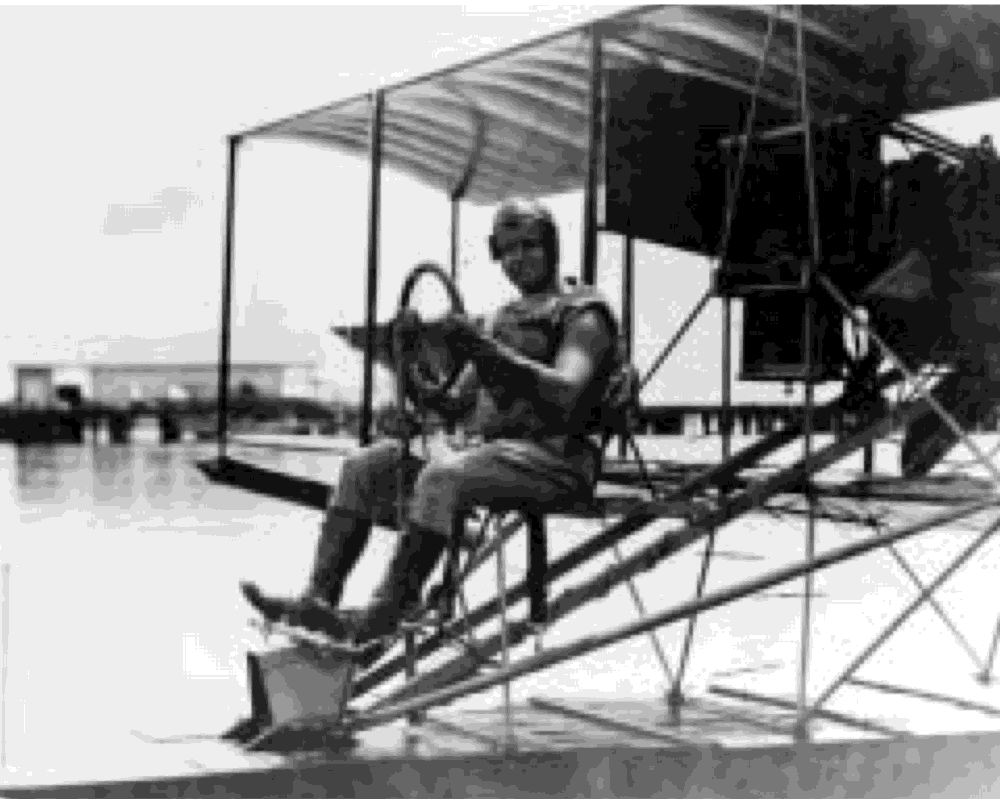
18
UNITED STATES NAVAL AVIATION
1910-1995
1916-Continued
11 January
The Naval Observatory forwarded two
magnetic compasses to Pensacola, Fla., for tests under
all conditions. These compasses, modified from the
British Creigh-Osborne design on the basis of recom-
mendations by Naval Aviators, provided a model for
the compasses widely used in naval aircraft during
World War 1.
21 January
In a step that led to the establishment of
an aviation radio laboratory at Pensacola, Fla., the
Officer in Charge of Naval Aeronautics requested the
Superintendent, Radio Service, to authorize the radio
operators at the Pensacola Radio Station to experiment
with aircraft radio. Simultaneously, four sets of radio
apparatus for aeroplanes were received at Pensacola.
Although initiation of developmental work did not
begin immediately, by late July an officer and a civil-
ian radio expert had been detailed to aircraft radio
experimentation at Pensacola and the Bureau of Steam
Engineering had ordered approximately 50 aircraft
radio sets.
10 February
The Bureau of Construction and
Repair implemented a Navy Department decision by
directing that designating numbers be assigned to all
aircraft under construction and that these numbers be
used for identification purposes until the aircraft were
tested or placed in service at which time standard
designations provided by the order of 27 March 1914
would be used. Numbers, beginning with 51-A, were
simultaneously assigned to 33 aircraft. This was the
introduction of serial numbers hereafter assigned to
all aircraft.
4 March
Captain Mark 1. Bristol was detached as
Director of Naval Aeronautics and both the title and
the office ceased to exist. Captain Bristol was assigned
to command
North Carolina
(ACR 12) and, under a
new title of Commander of the Air Service, assumed
operational supervision over all aircraft, air stations,
and the further development of aviation in the Navy.
Such aviation duties as remained in the Office of the
Chief of Naval Operations were assumed by
Lieutenant Clarence K. Bronson.
25 March
Qualifications for officers and enlisted
men in the Aeronautic Force of the Naval Militia were
defined by General Order which, in each instance,
were over and above those prescribed for the same
ranks and ratings of the Militia. These extras, cumula-
tive for ranks in ascending order, required ensigns to
have knowledge of navigation (except nautical astron-
omy) and scouting problems, practical and theoretical
knowledge of aeroplanes and motors, and ability to fly
at least one type of aircraft. Lieutenants Ug) were in
addition to have some knowledge of nautical astrono-
my, principles of aeroplane design, and to qualify for
a Navy pilot certificate. Additional requirements for
lieutenants called for a greater knowledge of nautical
astronomy and ability to fly at least two types of naval
aircraft, while lieutenant commanders, the highest
rank provided for the force, were also to have knowl-
edge of Navy business methods used in aeronautics.
Aviation mechanics were to have knowledge of air-
craft maintenance and aviation machinists were to
have similar knowledge of motors.
29 March
Lieutenant Richard C. Saufley, flying a
Curtiss hydroaeroplane at Pensacola, Fla., bettered his
own American altitude record with a flight to 16,010
feet and on 2 April extended it again with a mark of
16,072 feet.
C
K. Bronson 416339
30 March
The Secretary of the Treasury informed
the Secretary of the Navy that Coast Guard officers
Second Lieutenant Charles E. Sugden and Third
Lieutenant Elmer F. Stone had been assigned to flight
instruction at Pensacola, Fla., in accordance with an
agreement between the two departments.
15 April
An anchor and a two digit numeral, both
in dark blue on a white background, were pre-
scribed as "Distinguishing Marks for Naval
Aeroplanes" in a Bureau of Construction and Repair
drawing. The anchor and numeral were painted out-
board on the upper and lower wing surfaces, the
anchor was generally placed on the vertical tail sur-
faces and the numeral fore and aft on both sides of
the fuselage.
 |
18 |
 |